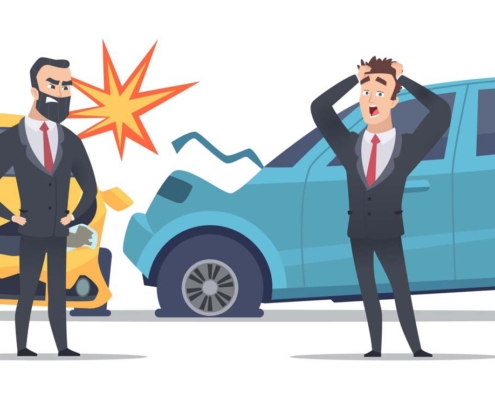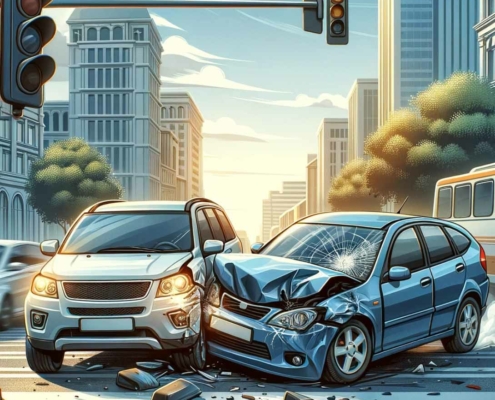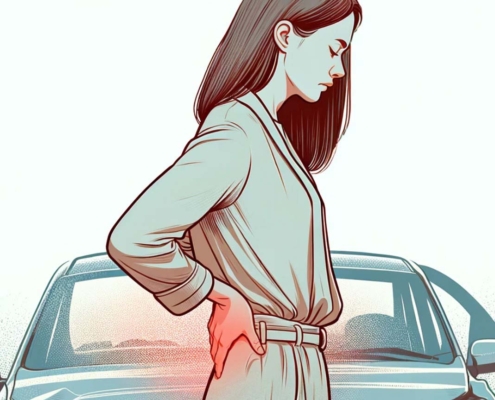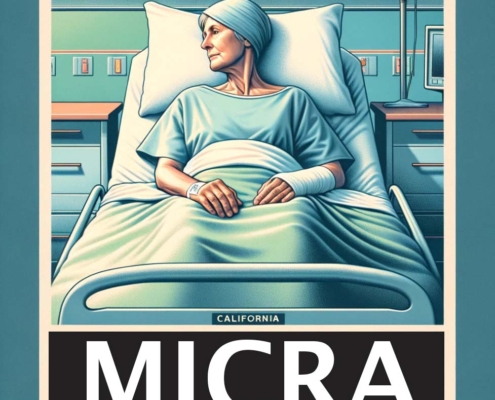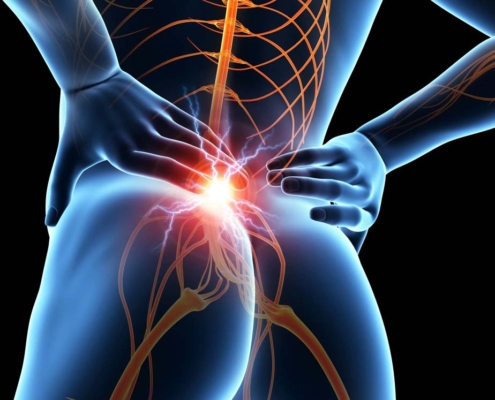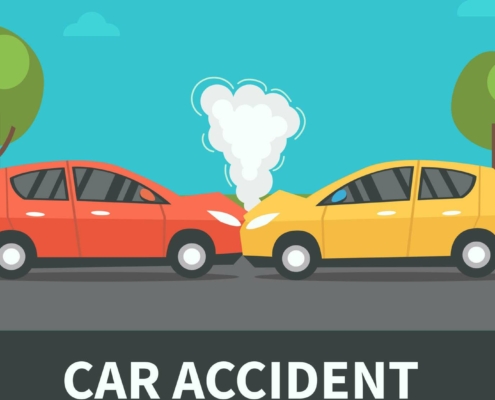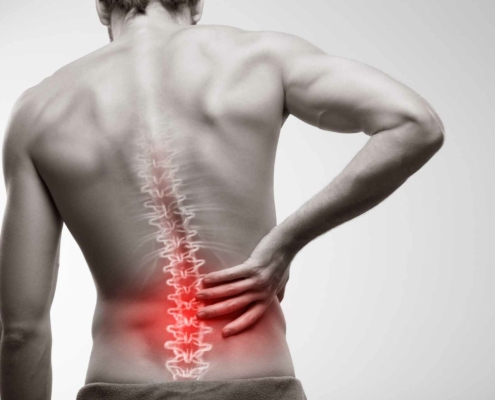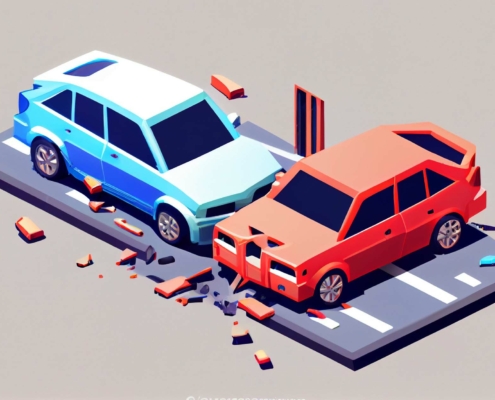Understanding Pain and Suffering in Personal Injury Claims
Personal injury claims often involve the confusing and controversial concepts of “pain” and “suffering”. Pain is a medical term, “pain and suffering” is legal terminology. A personal injury lawyer often faces the challenge of explaining the subjective nature of pain and suffering to a jury. To help jurors understand, attorneys must clarify the distinction between the medical definition of pain and the legal concept of pain and suffering. This poses difficulties for jurors while assessing damages and results in inequitable decisions in trials.
Jurors’ Challenges in Assessing Pain and Suffering Damages
Many calls for limits on pain and suffering damages come about from studies that show huge discrepancies between jury verdict awards for similar injuries. In these situations, a skilled personal injury attorney can guide the jury through the complex evaluation process. Juries are often provided with very little guidance on how to decide a monetary value for such nebulous concepts. The challenge lies in translating the subjective experience of pain and suffering into an objective monetary value.
Legal Strategies for Quantifying Pain and Suffering
Personal injury lawyers should also use benchmarks or examples that jurors can tangibly measure to understand how they would calculate pain and suffering damages. A personal injury lawyer must creatively present evidence to make the pain and suffering of a client tangible to the jury. Such per diem arguments attempt to quantify pain and suffering in a way that jurors can easily comprehend and apply. However, these methods have been criticized for not having an evidentiary base and are sometimes inadmissible by judges.
The Role of Medical Experts in Proving Pain and Suffering
Although the injured party is the only one who can directly prove that he or she suffered from pain and suffering, this evidence may be extremely suspicious for jurors. An experienced personal injury attorney understands the importance of expert testimony in substantiating claims of pain and suffering. Jurors often struggle to empathize with the plaintiff’s pain and suffering without substantial, credible evidence. This is why the testimony from an expert physician could be crucial.
Utilizing Medical Records to Evidence Pain and Suffering
Identifying evidence of pain and suffering that juries can understand from their own experiences is difficult because pain is a subjective belief considered individual to each person. This is where a personal injury lawyer’s expertise in interpreting medical records becomes invaluable. On the other hand, medical records may give objective evidence of pain and suffering. These medical records serve as crucial evidence in objectively demonstrating the patient’s pain and suffering.
Challenges and Necessities in Proving Pain and Suffering in Court
Pain has recently become one of the most important medical concepts and so it is now regarded as the fifth vital sign. A personal injury attorney must often bridge the gap between medical assessments and legal arguments. Doctors and nurses must evaluate and document pain intensity using a standardized rating scale.
Effective Legal Advocacy in Personal Injury Cases
Pain and suffering damages can be a tricky area because of the subjective nature of these terms. It’s crucial for a personal injury lawyer to articulate the nuances of pain and suffering to a jury. On the other hand, lawyers can help jurors understand and calculate damages for pain and suffering more adequately through objective standards such as providing concrete benchmarks and using medical records as evidence.
The Importance of Careful Analysis of Medical Records
Some judges permit jurors to take respective parts of medical records into the jury room for close consideration. A skilled personal injury attorney will scrutinize every detail in medical records to support a client’s claim. But this can make jurors overlook certain entries or misinterpret them. To determine the extent of pain and suffering, a careful analysis of medical records is essential.
The Critical Role of Medical Documentation in Legal Cases
If one part of the medical records is allowed, it does not mean that other entries are above argument. The expertise of a personal injury lawyer is often crucial in determining what medical evidence is admissible. Only those parts of the record that would be allowed if they were testified by the author of such records can be considered admissible.
The Impact of Nursing Notes and Physician Testimonies in Court
Jurors must often rely on medical testimony to understand the implications of pain and suffering. A personal injury attorney relies heavily on medical testimonies to paint a clear picture of a client’s suffering. A medical expert witness may also be interrogated about all the entries on record that substantiate their conclusions and explain those terms and abbreviations which are used in medicine.
Medication Records
A medication record in a hospital chart is like striking gold when it comes to helping jurors understand concepts of pain and suffering. The interpretation of medication records by a personal injury lawyer can be a key factor in proving pain and suffering. Each medication entry in the record serves as a testament to the patient’s experience of pain and suffering. Every medication given to a patient according to what the doctor orders is documented in this section of the chart without mattering how it is being administered.
Role of Attorneys in Interpreting Medication Records
An attorney can use medication records to prove the extent of a patient’s pain and suffering. An attorney does not always need a medical expert to use this valuable information. The internet may be used to retrieve information about the drugs included in the medication record.
Internet Resources and Medication Analysis
The data in the medication record provides crucial evidence to prove ongoing pain and suffering. Using this information alongside the record of medications, their dosages, and frequency would help to pick out pain relief drugs that range from narcotics through to non-steroidal anti-inflammatory drugs (NSAIDs). Proving pain and suffering becomes more effective with detailed analysis of medication records. These medications can be questioned to any medical personnel at trial as to what they are meant for.
Medication Frequency and Pain Intensity
The frequency of pain relief medication administration is a clear indicator of ongoing pain and suffering. Internet can also point to the comparative strength of various pain relievers, ranging from NSAIDs and proceeding up to more powerful ones like morphine derivatives including Dilaudid. The consistency of pain medication in the records helps prove the patient’s continuous pain and suffering. By making a list and verifying the dosage and timing of administration with a medical practitioner, one will manage to show the jury how you undergo all that pain and suffering. To prove pain and suffering, attorneys often correlate medication types with the intensity of pain.
Visualizing Pain and Suffering for the Jury
Chronic use of pain medication in the records highlights the patient’s prolonged pain and suffering. Once these important records, or sections of them, are given as evidence, they can then be put on a screen where the jury can see them. Proving the patient’s pain and suffering often relies on interpreting medication dosage and frequency. This visual interpretation translates the language of “Pain and Suffering” to comprehensible terms, making them real. Medication records can prove invaluable in substantiating claims of pain and suffering in court. It is a potent tool that should be never neglected.
Conclusion
In general, personal injury lawyers perform a vital function both in representing their clients and ensuring that their suffering is fairly recognized and compensated. Their expertise, without which specifics of pain and suffering might be disregarded or underestimated in the legal system. Specialist in personal injury law ensure that their clients get proper compensation for their pains and woes by presenting medical evidence, expert testimonies and legal argument to bridge the gap between personal frustration with legality. By doing this, they preserve the sanctity of legal proceedings and guarantee that justice prevails for those who have been wrongfully harmed.


